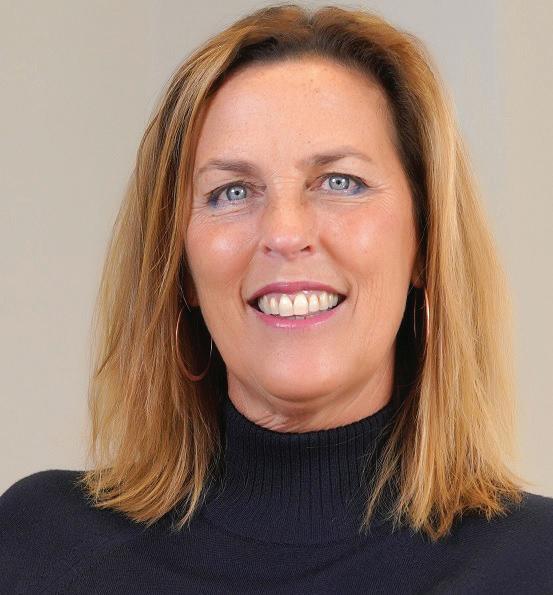
10 minute read
THIS POINT IN TIME
Real estate pros on the state of the market and what they expect in the coming months
BY GEERT DE LOMBAERDE
Advertisement
Six months after the COVID-19 pandemic reached Nashville in earnest, it’s clear that it’s had a noticeable impact on the region’s real estate market. O ce space has been vacated and the retail sector has been severely scarred. On the following pages, seasoned local leaders from the development, leasing, design and construction spheres talk about that and other trends they’ve observed since the confusing days of late winter. ey also discuss what they think might happen later this year and into 2021. Points of agreement? Most signi cantly, it’s not as bad as feared. And perhaps most frustratingly, we still don’t have clarity about a lot of important things.
Eakin Partners’ Barry Smith sees o ce absorption returning to normal pretty quickly
hings are slow. Companies are un“T derstandably afraid to make a ve-, seven- or 10-year commitment if they don’t know what they’ll look like, how many people they’ll have and when they’ll all work in the o ce again. But some people are thinking about thinking about it. If they’re facing a lease expiration, they have to do something, even if it’s signing on for shorter-term leases.
Some o ces are putting in place partitions or having people working from every other cubicle. We’ve seen the amount of sublease space come up; some companies are consolidating spaces but what’s di erent from other times is that we’re just not seeing anyone kicking the tires. I don’t think we’ll see o ce environments get back to what was normal until about a year from now. We might be back at 75 percent early next year.
Nashville will de nitely be a benefactor from this pandemic in the long term. If you’re in a Tier 1 city, you’re working on the 40th oor and you’re having to worry about taking the elevator and the number of people in the building and the ingress and egrees. And then you go home to your 60th- oor condo. You won’t have that anywhere near as much here. It’s the same trend that has bene ted Nashville for a long time now but I think it will accelerate.
I think we’ll be back on our previous trend line by late 2021 or early 2022, depending on just when we’ll get a vaccine. Nashville still has a cheaper cost of living than these big cities and our rents are still below Los Angeles, San Francisco, Chicago and even Austin now. Sure, it’s a double-edged sword that we have more space being built right now than we have historically. But I expect we’ll see that get absorbed at a pretty normal pace.”
Colliers CEO and market leader Janet Miller says a lot of clients are still finding their bearings
“I think we’re going to see two or three more quarters of decline. We’re not naive enough to think we’re done. So many clients just don’t know what to do at this point. The best we can do is help them understand the situation and work with data rather than emotion.
The fundamentals of Nashville have not changed. I still believe the long-term outlook for this city is as strong as it ever was. Navigating from here to there will be the trick. We have a lot of slogging to do over the next year. All you can do in the middle of this is make the best choice for your company this day that you can possibly can.
That said, we have seen some unexpected bright spots and there has been lots of activity. I look at retail. I would think my team would be miserable right now but they’re as busy as they can be. Yes, you do have some property owners who are running into trouble, but you have lot of buyers who are still desperate to get into Nashville.
On the o ce side, it always helps to compare where we are to past recessions. Space for sublease is about 2.5 percent right now; that is the same as the height of the last recession. So that says, yes, companies have been severely impacted but maybe not to the level we would’ve thought in March. We’re probably not done yet, but we also are not Janet Miller

seeing a stampede to exit space.
And there will be o setting factors. We’re just not going to see people elbow to elbow anymore. There will be a drop in space needs and how we use our space but companies will still have a need for community and creativity. I don’t think corporate America is going to give that up.
When it comes to new development: Before COVID, we were seeing some very bold out-of-town developers coming and preparing to build all spec. I have a hunch those developers will still want to be in Nashville but that we won’t see 100 percent spec. I think we’ll go back to what we’ve always seen: You need a good bit of pre-leasing before you start.
I certainly don’t see people canceling projects. Think about the mindset: Any development has a 10- to 20-year horizon. To make decisions based on one year is just not prudent. When you’re spending $100 million on an o ce building, it’s going to be a long-term project.
That said, job growth is the thing that drives all of this, and it’s going to take time for us to get back lost jobs. The Chamber team has done a really good job with their forecasts and they see us getting back to level in about a year. So we’ll have lost a year to this — but so will everyone else.”
Conseco Group owner Phil Pace expects his construction pipeline to stay active


thought we’d be through this by now
“I but we have a long way to go. I’m seeing a cautious apprehension about moving forward. Projects that have had their lending approved and their permits secured? ey’re moving forward. But a lot of people are asking, “Do we really want to sink soft costs into projects until we know what the world will look like?” A lot of clients are also hoping prices come down for some commodities.
We’re seeing a pullback on condo and large multifamily projects. Retail was already really slow long before the virus hit and restaurants are struggling across the board. But things are changing big time with their operations. Look at the Chick- l-A on Church Street: It’s a giant kitchen, there is no place to sit down and you pay with plastic only. In a post-COVID

Phil Pace



world, I think we’ll see more of those.
I don’t think our construction pipeline will run dry by early ’21. It’ll be like 2008, when we redid 20 McDonald’s restaurants in four months and remodeled every Chick- l-A in the market. I don’t see things drying up until money becomes more expensive. But everyone is working harder and doing more due diligence before committing to a deal.
With o ce space, we’re already seeing changes across the board. Large employers are not only rethinking their space needs. ey’re already downsizing their space. ey’re saying, “Telecommuting is working.” It’s serious enough that large o ce employers are actively seeking brokers to put their space on the market. I think you’ll see a lot of space coming to market by the fourth quarter.?
79% of large companies responding to a CBRE survey in June said the importance of the physical o ce will decrease slightly or remain the same after the COVID crisis
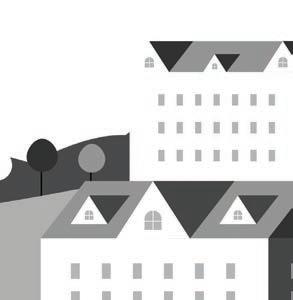
70% of CBRE respondents said at least a portion of their workforces would be allowed to work remotely full-time
73% of CBRE respondents expect fl exible o ce space will play some role in their future real estate plans
5.8% The Deloitte Center for Financial Services this summer said health and safety measures — design enhancements, cleaning services, thermal scanners, air fi lters and more — will increase the cost of managing o ce properties by nearly 6 percent, per square foot

THE UNRIVALED VIEWS STAY FOREVER. THE PRICING WON’T.



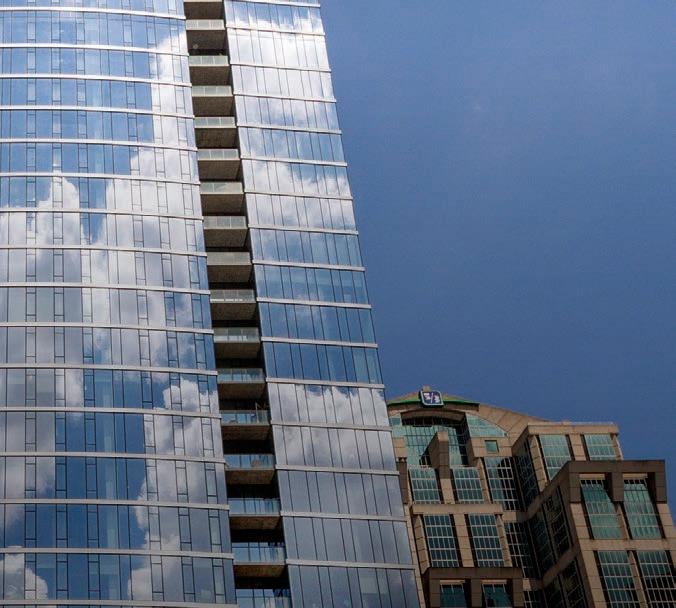

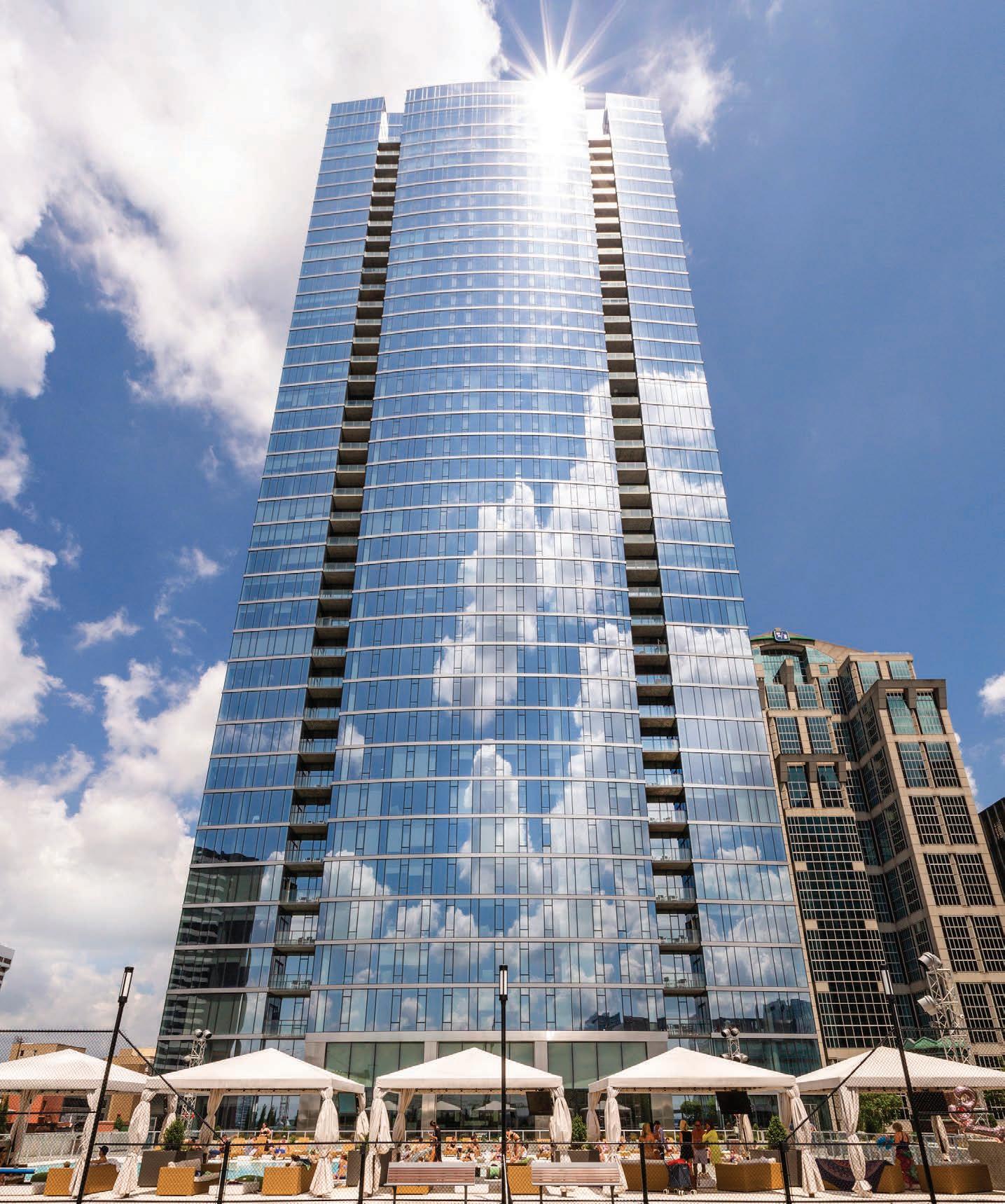

PURELY RESIDENTIAL | SUPERIOR AMENITIES | UNBEATABLE LOCATION APARTMENTS FROM $1,495/MO. | CONDOS FROM $495,000


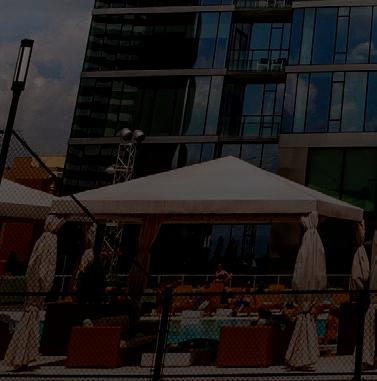

Dane Peachee

‘I’m not seeing lease rates come down’
Dane Peachee of tenant representation firm CREA thinks another factor will actually lift rent costs
onditions today are a fair amount “C better than I would’ve predicted in March or April. ere’s still a fair amount of activity; we’re working on several possible deals that we would have been in the normal course of business. And there are not nearly as many empty properties as I’d have expected, or as much sublease space.
Is that a matter of not yet? I think there’s still a possibility of that. But the market here has been so strong for so long that I think we are just more resilient to challenges than the overall national economy. A lot of that is attributable to the health care sector and developers here are also a little more conservative. ey typically don’t overbuild.
I don’t think we really know yet how companies will answer the big o ce space questions. My guess is some companies will require more space for separation while others could end up keeping the same amount of space but give employees the option to work permanently from home. You’re also seeing more hoteling of o ce space.
We haven’t seen any major price reductions for o ce space. Most landlords have only o ered some incentives such as free rent or more for tenant buildout. I’ve got my eye out for broader signs of rates coming down and checking frequently — especially on transactions that are taking a little while to get closed — but I’m not seeing it. If anything, existing tenants in Nashville are going to have their rent go up because of this huge property tax increase.”
Mike Manous

Manous Design’ Mike Manous has seen little in the way of wait-and-see
“W e’re still heavily involved with tornado recovery work, especially here in Wilson County but also in Sumner and Metro. We’re busier than we’ve ever been and we’re getting calls for new work almost daily. It has not slowed down one iota. I was really expecting people to pull back and take a wait-and-see attitude. But it could be that it’s kind of a downtime for people and they’re investing in the future.
One thing we are seeing is that people are really struggling with governmental approvals. Several communities are in disarray, with some people working on a week then o a week — which means not answering their emails for a week.
I would’ve expected construction costs to retreat a bit. Lumber prices, especially, have escalated hugely. Usually, we see that after a couple of storms have hit the coasts but now we’re seeing the e ect of producers shutting down their mills for a while in the spring. I fear the home building market is so hot that we’re going to start to see people pull back because of those costs. These are very interesting dynamics and not what I expected.
We could get a repeat of ’07-’08, when things were going great and then all of a sudden, everything stopped. I don’t see anything in the tea leaves to say that’ll happen but I’m watching things.”





